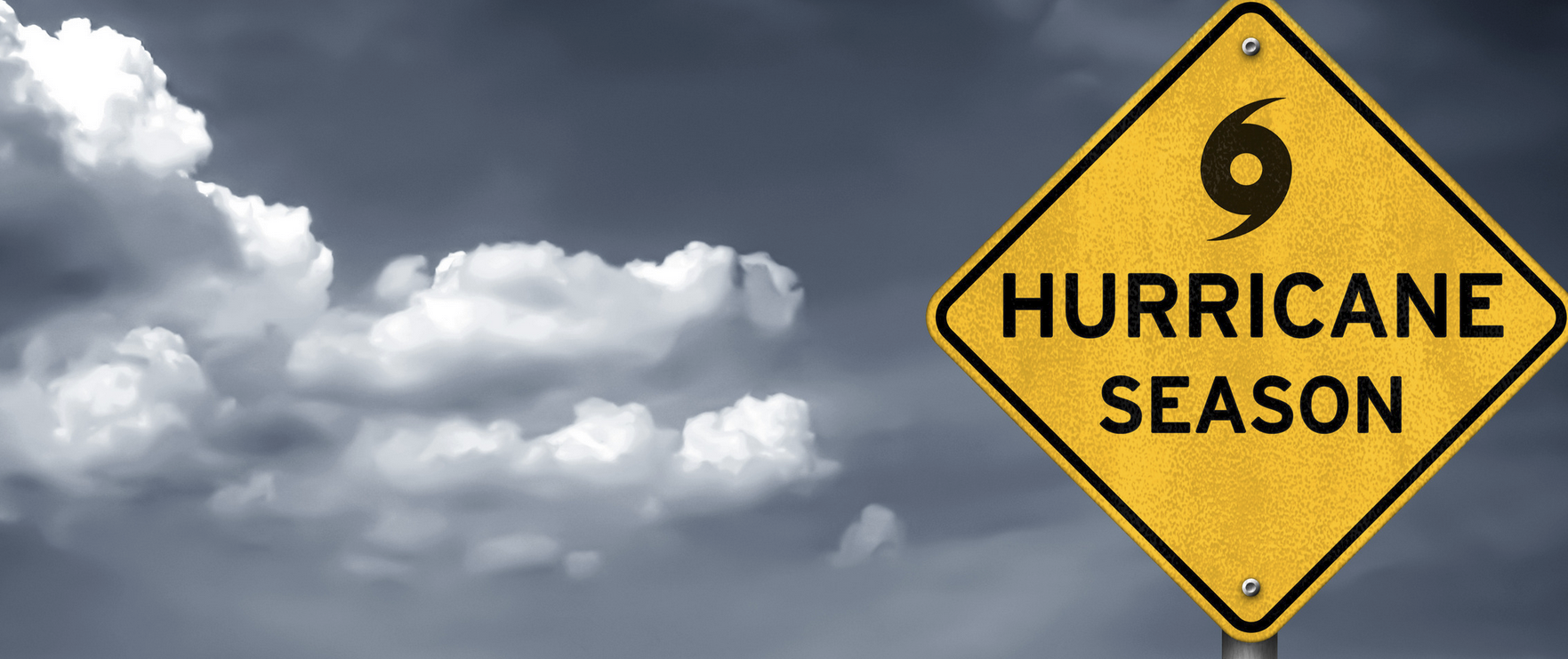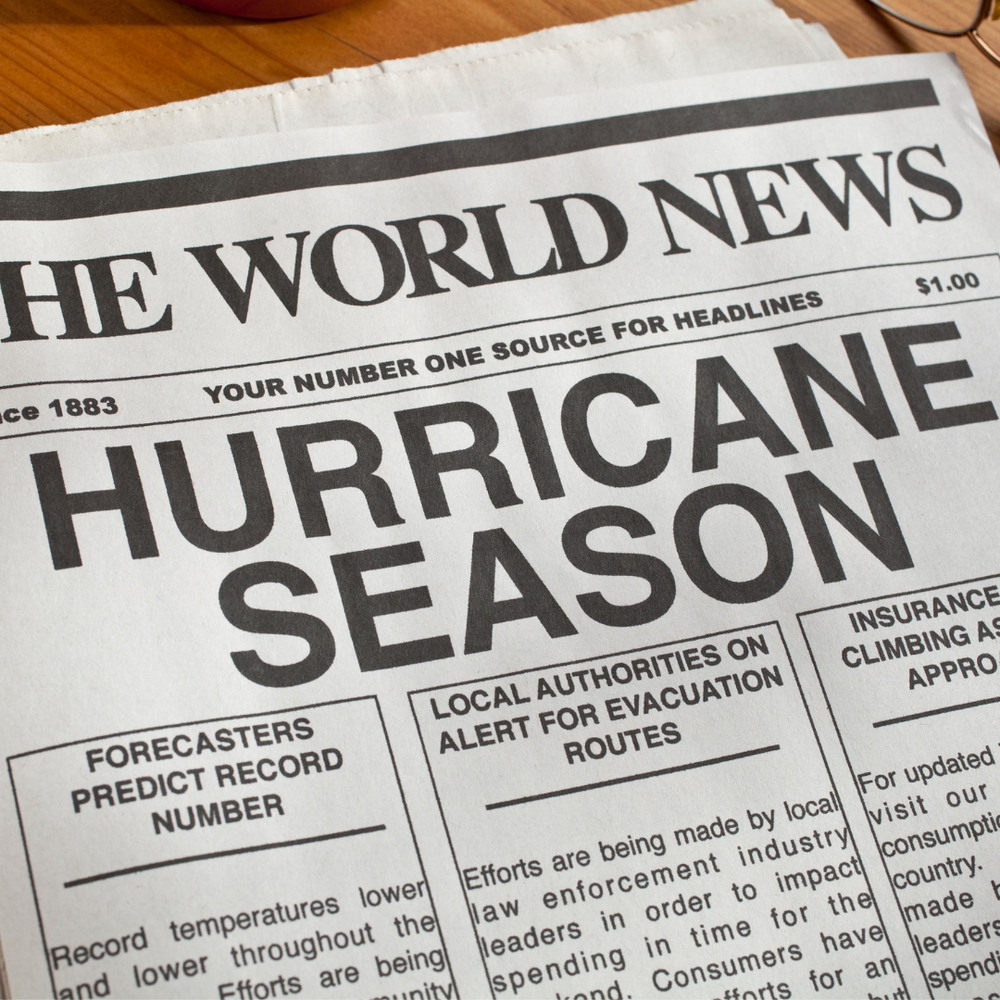When Storms Arise: Preparing for Hurricane Season
Posted by Ola Griffin on May 7th 2024

Be Prepared: Facing the Storms Ahead
Preparedness is not only about being prepared physically, but also mentally. It’s better to have a plan and put it into action, rather than to just re-act.
Having a plan in place is essential for swift action during emergencies such as evacuation, seeking shelter in a storm shelter, or sheltering in place. When tornado or tsunami sirens sound, it's not the time to formulate a plan; it's time to act or put your existing plan into motion. Having plans can literally save lives, including yours and your family's.
Tornadoes and hurricanes follow seasonal patterns. With the tornado season already in full swing and the hurricane season right around the corner, now is the perfect moment to prepare for impending storms.
We'll be providing a series of blog posts on preparedness, covering how to prepare your home and mind, fostering a sense of calm and security even amidst looming storms. These preparations aren't limited to hurricanes or tornadoes but are applicable to any natural disasters.
Tornado and Hurricane Seasons
While tornadoes can occur at any time of the year, there is a heightened tornado season that takes place during the months of April, May, and June. In April 2024, there were a total of 298 tornadoes in 14 states; nine being EF3 and one EF4.
The Pacific hurricane season officially begins on May 15, 2024, developing in the eastern Pacific basin. While uncommon, these storms can have a great effect on the West Coast. In August 2023, Hurricane Hilary traveled up the Pacific Coast next to Mexico and came ashore in Baja California, resulting in widespread flooding and mudslides. This was the first hurricane or tropical storm to hit California in 83 years.
The more active Atlantic hurricane season starts on June 1, 2024, affecting the Gulf of Mexico, Caribbean, and the East Coast of the US. This year’s season is expected to be a very active one.
Weather.com has released the 2024 hurricane season outlook. There are currently 23 storms named (average = 11), 11 hurricanes estimated (average = 7), and 5 CAT 3+ hurricanes estimated (average = 3).
As these hurricane seasons approach, let us work together and create plans that benefit you, your family, and your neighbors. Please share these links to spread awareness about preparedness.
PackFreshUSA's Disaster Preparedness Bundle
In time for this year’s hurricane season, PackFreshUSA has created the Disaster Preparedness Bundle, a bundle with everything you need to kick-start your own emergency kit.

The 235-Piece bundle includes the following:
- 10 x 5 Gallon 5.5 Mil Seal-Top Bags (20” x 30”): Perfect for storing bulk food, clothes, and blankets. Strong enough for camping, outdoor, and survival gear.
- 10-pack 2000cc Oxygen Absorbers
- 10-pack 500cc Oxygen Absorbers
- 50-pack 500cc Oxygen Absorbers
- 1 x Mini Bag Sealer
- 3 x 9 Lives Wet Phone Fix
- 100-pack 5 mil LargeSilver/Clear (6” x 9” x 3”) Stand-Up Pouches: Perfect for storing small items, snacks, and DIY first aid kits.
- 50-Pack 5 gram Desiccants: Keep moisture away from important documents, photos, and your food storage.
- 1 x PackFreshUSA Long-Term Food Storage Guide
Check out this video where I showcase and explain everything included in this convenient bundle:
8 Essential Hurricane Preparedness Items
1. WATER:
Water Storage: We should plan for 1 gallon of water per person, as it's crucial for prepping. Adequate water storage is a top priority since we can go 3 weeks without food but only 3 days without water. Don't forget to keep extra water for your animals as well. Check out this video on water storage using PackFreshUSA’s 6”x6” Mylar Bags:
Also check out this clip from my Tuesday Quick Tip about how easy it is to keep emergency water around your home.
2. FOOD:
Having at least 3 days of food is recommended. I love having these 72 hour bins of food storage for 2 people with my freeze-dried meals. Check out the blogs I did for freeze-dry breakfast and dinners. You can store other food like canned soups, peanut butter, crackers and so much more.
3. GASOLINE:
Remember to fill your car with fuel a day or two prior when an incoming storm is announced. The same goes for any fuel powered generator. Having extra gasoline or diesel on hand is also recommended as I recall incidents in New Orleans where people couldn't evacuate because gas stations had run out of fuel. Remember to only store gas in approved containers and away from any living spaces. Properly stored fuels will last at least six months and fuel stabilizers can be used to help keep gasoline fresh.
4. COOLERS:
In addition to coolers, you'll want to stock up on ice, ice packs, or even consider using dry ice to ensure your perishable foods stay well preserved during power outages or emergencies. It's also highly beneficial to have a solar generator on hand. In the event of a power outage, a solar generator can be a lifesaver, allowing you to power essential appliances like a refrigerator to keep your food from spoiling.
5. MEDICATION:
Having an organize first-aid kit , regardless of it being hurricane season, is always a smart idea.
Using something like PackFreshUSA's 5-mil Large Silver/Clear Stand Up Pouches is a great way to keep all your first-aid supplies organized and readily available.

Check out the following checklist for items to consider including in your kit:

Click HERE for a printable PDF of this First-Aid Kit Checklist
Don’t forget to have written copies of any medication or prescription, along with dose instructions, included in your emergency kit.
I also store at least a week's worth of medicine in my Grab-n-Go Bags, which is the next tip.
6. GRAB-N-GO BAGS (FLASHLIGHTS, BATTERIES, & RADIO):
To learn more about grab-n-go bag. Weather it is a fire evacuation, earthquake, tornado, or any other disaster, have 2 - 3 days of items you need is so important. Check out this previous blog for a detail guide in making a Grab-N-Go bag or check out this printable PDF checklist.
7. DISPOSABLE ITEMS:
Stocking up on disposable items such as plates, cups, and utensils is a wise decision during emergencies. When water usage needs to be limited, having these disposable items ensures that you can prioritize water for essential tasks like drinking and cooking rather than using it for cleaning dishes. Additionally, it's helpful to keep extra trash bags on hand as they come in handy for waste disposal during such situations. This way, you can maintain cleanliness and manage waste efficiently, even when resources are limited.
8. COMFORT ITEMS:
Comfort items are crucial for maintaining morale during stressful times, especially for the little ones. Personally, I find that candy is a delightful comfort item that brings me peace, especially at the end of a long day. Consider adding snacks, small toys, card & board games, coloring books with crayons, and books to your grab-n-go bags. These items can provide much-needed distraction, entertainment, and a sense of normalcy during challenging situations.
This wraps up the first blog in our series on preparing for hurricane season. Stay tuned for our upcoming blogs, where we'll share tips on preparing your pets for hurricanes and creating an emergency toilet kit. You won't want to miss out on these helpful insights!
Happy prepping,
Ola D Griffin
Long-term Food Storage Expert
Customer Service, Safeguard Brands, Inc. dba PackFreshUSA
YouTuber Pandemic Prepsters - YouTube
Instagram - Ola Dee Griffin (@Preparedness101) • Instagram Photos And Videos
Tiktok - Oladeegriffin (@Oladeegriffin) | TikTok
|
Phone:(844) 857-8277
Mobile:(951) 902-4644 Email: customerservice@packfreshusa.comWebsite: PackFreshUSA.com Toll Free 5 Star Service Line: (844)8 5 STARS (844) 857-8277 |
PackFreshUSA is featured in this Meat + Poultry Magazine article on using oxygen absorbers with jerky.
Check it out!

